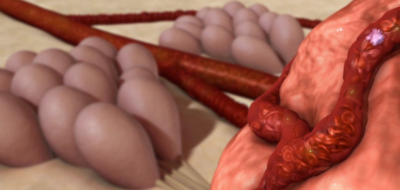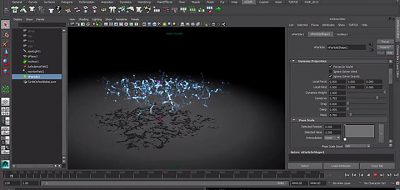Thinkinetic released a new update to the PullDownIt dynamics solver for Maya and 3DS Max with two new and significant features, adding transition dynamics for translation and rotational keys, and a new “unbreakable until” frame option for fractured bodies.
Despite the near 800 fragments involved in the simulation and the complexity of having 8 diferent fracture bodies in dynamics, Pulldownit computes the cart destruction very fast
You were able to have characters and objects push and break other objects dynamically in previous versions of PullDownIt, and this is really extended in PDI 2.7 with the New Transition Animation-Dynamics allowing animated objects to become dynamics themselves. You are able to set at what point animation will become dynamic, offering much more realistic physics to the destruction where fragments will naturally acquire the speed of the original object.
In the video example, you can see the use of the Transition Animation-Dynamics feature where the cart starts out as animation and then changes to become dynamic when it reaches the fence. The fragments of the cart acquires the speed of the original model and behave naturally. It is of note that the new Transition Animation-Dynamics only supports translate and rotational keys and ignores mesh deformation keys.
PDI 2.7 also has a new Unbreakable Until Frame option for fracture bodies feature which will prevent objects from fracturing until a set frame. This gives you much more control over fracture start time, allowing you to have an object actually receive other impacts without it fracturing. In the case of the demo video, we can see this in action on the cart which holds its fracture ignoring them with its interaction with the ground until the impact with the fence.
For more information on PullDownIt 2.7 features, check the post from Andres de Mingo who covers both the new features in great detail. PDI 2.7 also includes also several fixes – For more information on Thinkinetic’s PullDownIt for Max, and Maya, check out Thinkinetic here.







